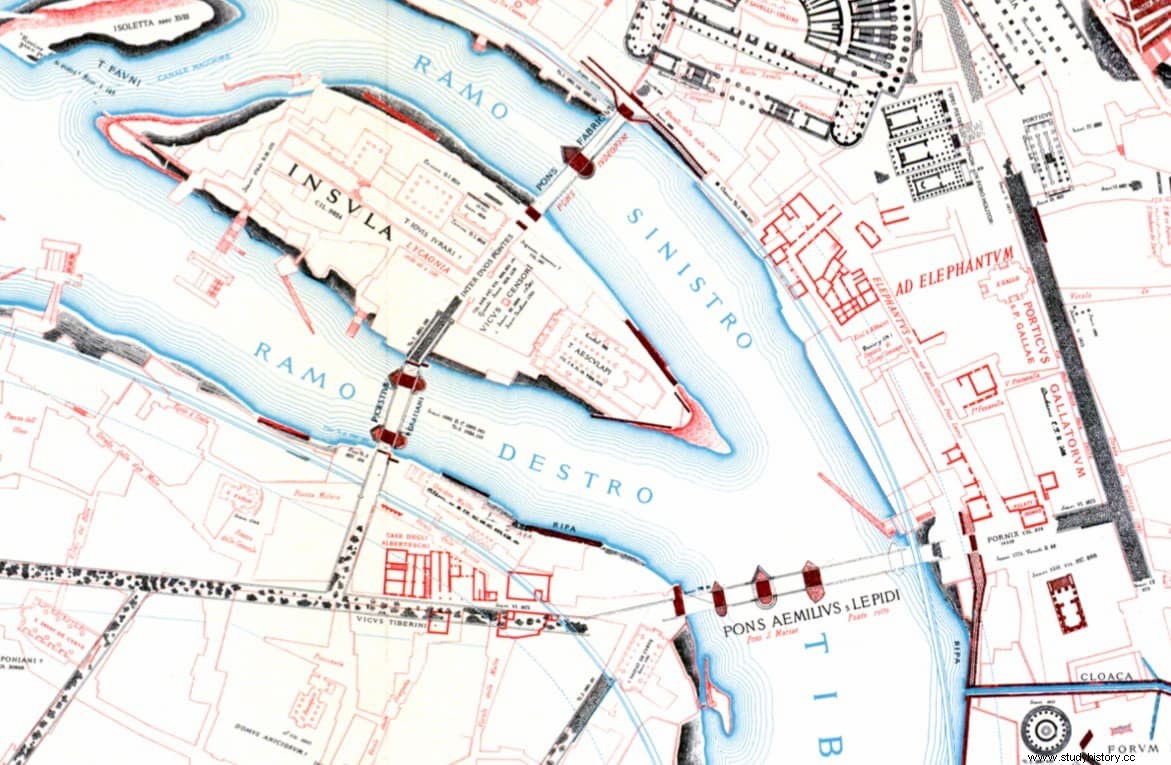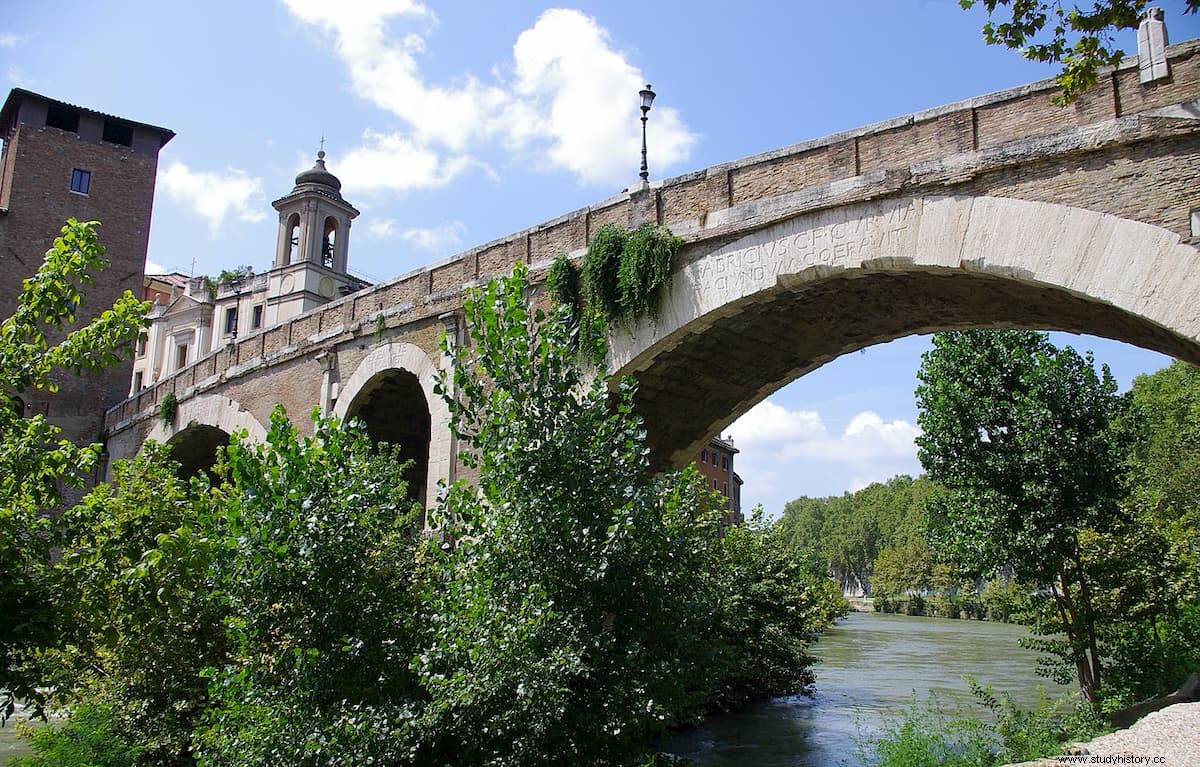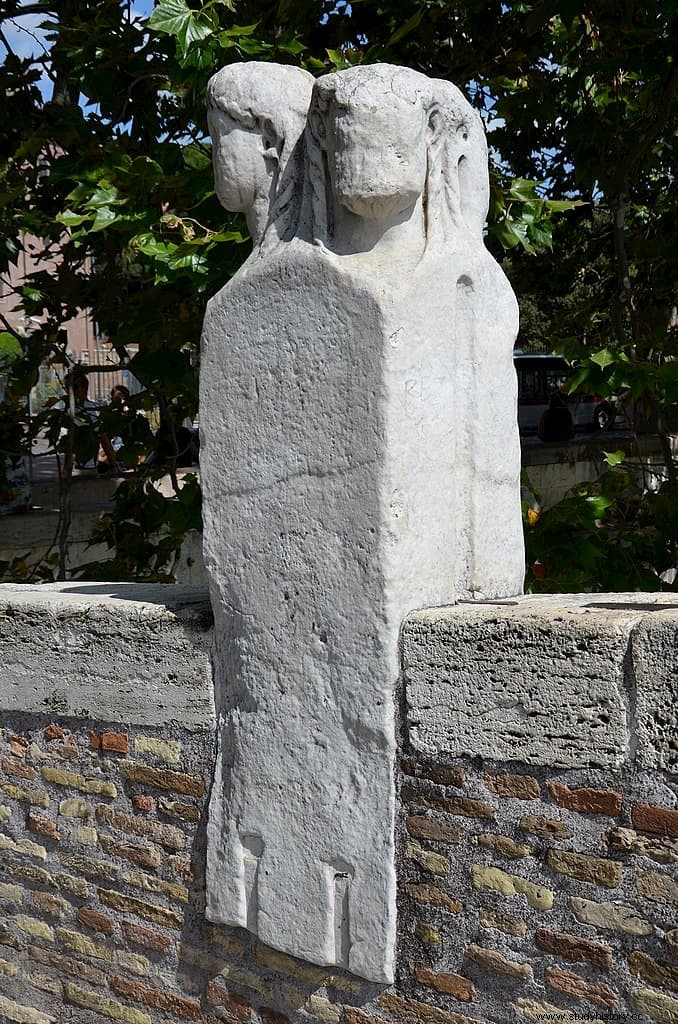The first bridges that the Romans built in their city, over the Tiber River, were made of wood. Some remained in use for a long time, up to several centuries, having to be constantly reformed and repaired. They finally started making them out of stone.

The oldest that remains of all of them in its original state without modifications is the so-called Fabricio Bridge. It is not only important because of its antiquity, it was built in 62 BC, but also because it has been connecting the Champ de Mars with the Tiber Island for more than 2,000 years without having undergone practically any modification to its structure.
It was built, as we said before, to replace an old wooden bridge destroyed by fire, which according to Tito Livio already existed in 192 BC. It was commissioned by Lucius Fabricio, who that year 62 BC. (the year following Cicero's consulship) was curator viarum , that is, in charge of maintaining the roads and bridges of the city, as indicated in the inscription on both sides of each arch:L(UCIUS) FABRICIUS C(AI) F(ILIUS) CUR(ATOR ) VIAR(UM) FACIUNDUM COERAVIT (Lucius Fabricio, son of Gaius, superintendent of the tracks, had it built).

It is 62 meters long and 5.5 meters wide, made up of two large 24 and a half meter round arches that rest on a central pillar with a spur-shaped base. Above this is a six meter wide arch to relieve water pressure during floods. At both ends there were two small arches three and a half meters wide, which are now underground.
The entire bridge is made with peperino stone, a type of volcanic tuff that contains basalt and calcareous stone, and covered with travertine to which brick was added in the 17th century.

It is one of the two Roman bridges over the Tiber that does not connect both shores, but one of them with the east of the Tiber Island. The other is the Cestius Bridge, which connects to the west side of the island, built at the same time as the Fabricio but which only preserves the central part of its old structure.
The Tiber Island is a small islet located in the river, near the Capitoline Hill, where it was located from 291 BC. the temple of Aesculapius, the god of medicine. It is just over 270 meters long and 67 meters wide at its widest point.

The Romans surrounded it with a wall that made it look like the prow of a ship, with an obelisk at its center for a mast. Both bridges did not have, according to Rabun Taylor, the mission of facilitating the passage from one bank of the river to the other, but of facilitating access to the island itself, once established there and revitalized the healing cult of Aesculapius in the island .
A small inscription on both sides of one of the arches indicates that the bridge had to be restored in 23 BC. by the consuls Marco Lolio and Quinto Lépido, due to a flood. When Pope Eugene IV was paved with travertine slabs, and another inscription, from 1679, indicates that Innocent XI rebuilt the parapets and the brick roof. However, it is considered that the structure remained intact in all these cases.
The bridge is also often called Four heads alluding to the two hermas (pillars surmounted by a bust) with four heads of the god Janus, transferred to the bridge in the 14th century from the nearby church of San Gregorio.

In addition, as Horacio tells us, the Fabricio bridge was the favorite place for all those who, wanting to end their days, threw themselves into the river .
